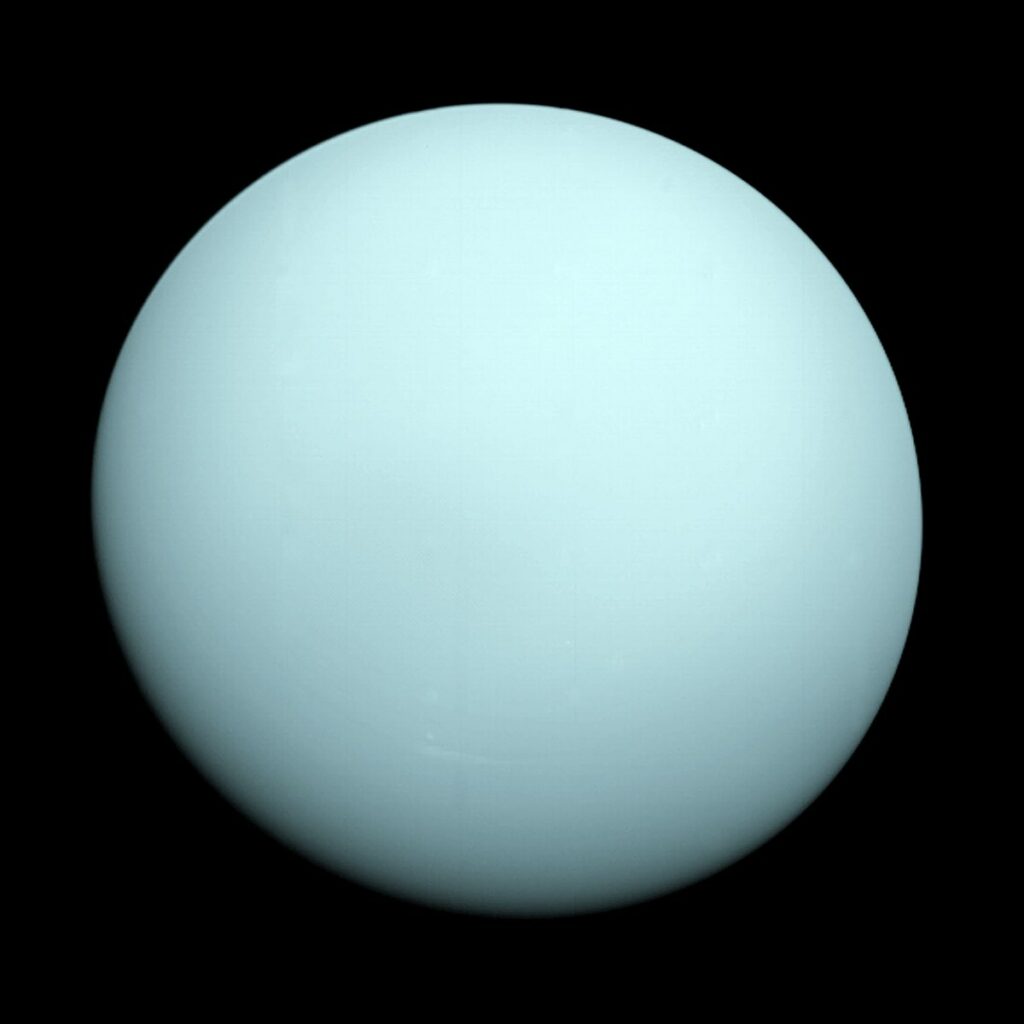More than 30 years ago, NASA’s Voyager 2 spacecraft flew over Uranus, getting as close as 50,600 miles to the planet’s clouds.
The data collected back revealed new rings and moons. But there was another finding as well, which remained hidden for a long time.

A team of researchers from NASA took a new look at the data from the spacecraft, discovering that the voyager had passed through a gigantic magnetic bubble, also called a plasmoid – a giant structure comprised of plasma and the planet’s magnetic field.
Space physicists Gina DiBraccio and Dan Gershman, both from NASA’s Goddard Space Flight Center, reviewed the Uranus data because they wanted to understand its strange behavior. “The structure, the way that it moves …,” DiBraccio said, “Uranus is really on its own.”
Unlike any other planet in our solar system, Uranus turns almost perfectly sideways, like a rolling barrel. This axis of rotation points in a direction 60 degrees apart from its axis of the magnetic field, making its magnetosphere wobble chaotically as it rotates.
The researchers downloaded the readings obtained by Voyager 2’s magnetometer, which monitored the strength and direction of Uranus’ magnetic field as it flew over the planet. They were much more thorough than previous studies, to the point of reviewing measurements every 1.92 seconds.
Everything seemed ordinary, but the magnetometer marked a kind of zigzag at one point during its travels. The signal corresponded to a huge bubble of electrified gas: a cylindrical plasmoid at least 204,000 kilometers long and up to 400,000 kilometers wide.
Plasmoids are recognized as an important way for planets to lose mass. They detach from the part of the magnetic field of a planet that is expelled by the Sun. This phenomenon had been observed on Earth and other planets, but never on Uranus.
Over time, the plasma in plasmoids that escapes into space drains ions from the planet’s atmosphere, significantly altering their composition. In the case of Mars, the process ended up transforming it radically: it went from being a humid planet with a thick atmosphere to the dry world that we see today.
It’s not clear yet how Uranus’ atmospheric escape has affected the planet thus far, as scientists only got a tiny glimpse at this process. But the new discovery can help get some answers. “It’s why I love planetary science,” DiBraccio said. “You’re always going somewhere you don’t really know.”
The study was published in Geophysical Research Letters



